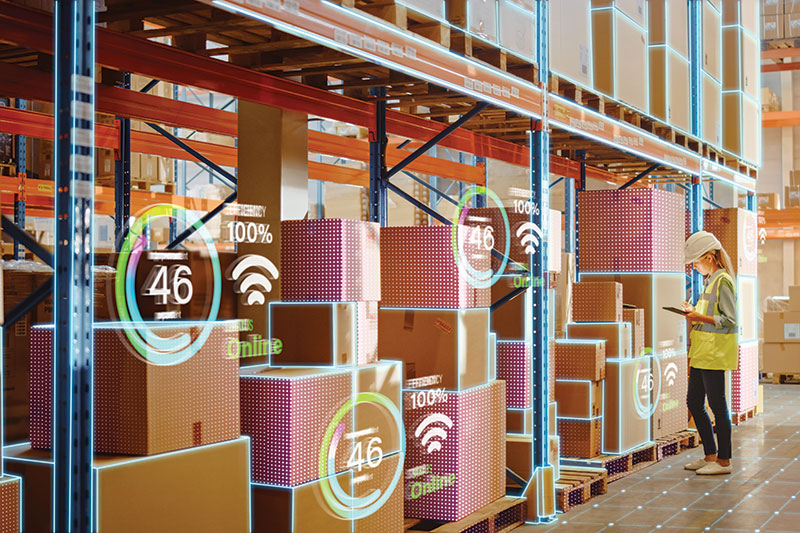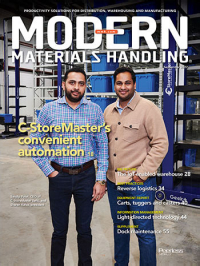Unpacking the Internet of Things (IoT)-enabled warehouse
Few companies are on mission to connect every possible asset with Internet of Things (IoT) technology. But interest is rising in Cloud solutions that leverage IoT to address specific operational aims, or to identify problems at package scan tunnels, or to monitor motive power charging to avoid lift truck downtime. Add them up, and IoT can be applied multiple ways in DC operations.
The Internet of Things (IoT) has some big numbers attached to it. Cisco Systems, the network technology company, predicts by next year nearly 30 billion devices will be IoT-connected. Cisco figures machine-to-machine (M2M) connections supporting a broad range of IoT applications will represent about 50% of that total.
Those big numbers, however, don’t matter much to management teams in warehouses, fulfillment centers and other materials handling environments. They want IoT apps that deliver clear-cut operational gains.
As a result, the rise of IoT in DCs tends to be piecemeal, driven by focused applications that leverage IoT, rather than a revolution in which companies are out to connect everything to the Cloud. In fact, plenty of IoT-enabled solutions are available for DCs that do things like provide insights on dock activity, ensure that lift truck batteries are charging properly, or check that motors on critical equipment like conveyors aren’t headed for unexpected failure.
Consider battery charging. Rather than offering only point visibility though a local display, IoT allows companies to connect both batteries and chargers to Cloud analytics.
Many battery issues are related to using proper charging settings, says Bret Aker, vice president of software solutions for Stryten Energy, which makes it desirable to hook both chargers and batteries into a Cloud monitoring solution. “If you have the whole system online, it’s so much easier to troubleshoot and correct problems,” says Aker. “It’s all about having better control over these critical assets.”
Many solutions
Stryten Energy offers a Cloud-based solution that uses IoT to monitor batteries and chargers, and to measure motive power requirements, says Aker. The goals include avoiding improper charging that could lead to downtime, protecting battery lifespan, and modeling motive power needs.
IoT and Cloud analytics, Aker says, can spot issues like chargers that are assumed to be giving a fast charge but are only giving a standard charge. “If you’re not charging correctly, oftentimes you won’t be able to get through the next shift with that battery,” says Aker.

As operations seek to curb fleet costs, some have pared down the number of batteries they carry, but the trick to doing that successfully, Aker adds, is having online visibility. “The cost of lean is better information,” says Aker. “Either the end user organization or the servicing entity should watch these assets more closely to avoid problems, which is where IoT comes in to connect the data to the Cloud.”
Stryten Energy has worked on making the software more self-adapting to situations like batteries that get moved from one site to another, says Aker. Much like the software for smart phones automatically asks if users want to pair with networks or speakers that come in range, Cloud battery management also has become more self-adapting to change.
“One of the big issues many of our larger users have is that they are unsure where all their batteries are,” Aker says. “That’s why we put these self-adapting features into our software—so the batteries are always talking up to the Cloud and triggering needed changes.”
Automation uptime
One of the broader uses of IoT in warehousing is to connect sensors to motors, drives, gearboxes or other components within automation systems to enable predictive maintenance. Of course, warehouse automation is already tightly monitored by programmable logic controllers (PLCs), wired networks and warehouse control systems (WCS), but it’s also possible for integrators or end-user maintenance staff to add wireless, IoT-ready sensors to watch for harmful trends in vibration or temperature.
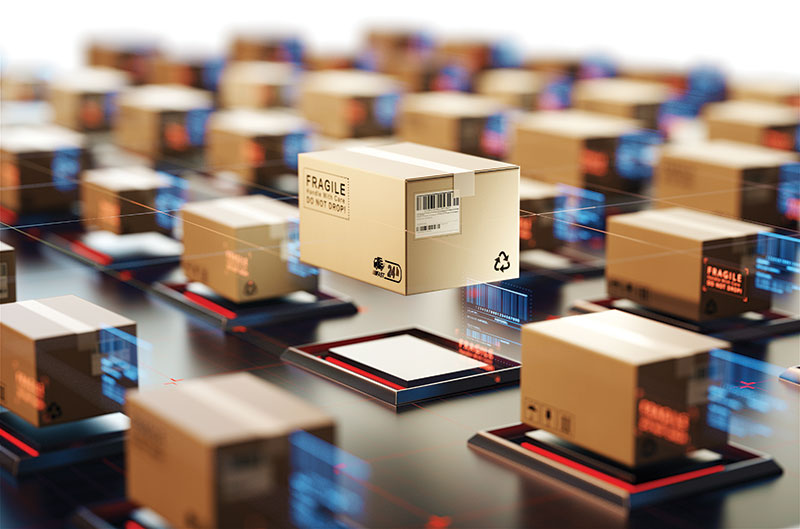
Adding sensors to critical components is just part of what’s needed for predictive maintenance, says Rob Fuller, a product manager with Regal Rexnord, which offers a lineup of “Perceptiv” diagnostic and monitoring solutions.
These IoT-enabled solutions combine sensing, IoT connectivity, software and expertise on the components themselves. Users of Regal Rexnord’s IoT-enabled solution include DSW, the shoe retailer, which has used the technology in its warehouse operations to monitor equipment health.
“Sensors are important to what we do, but they are a means to an end,” says Fuller. “The important part is improving their productivity, by helping them keep machinery operating reliably and at peak performance. And, since we’ve been in the business of manufacturing products like gear boxes and motors and bearings and chain drives and belt drives for many years, we understand the components themselves and the applications they’re used in, which makes us uniquely qualified to be a source of information on the equipment health.”
In practice, says Fuller, the most critical components within a material flow—those that would lead to significant downtime in an unexpected failure—call for monitoring with higher fidelity sensors, but some secondary components could be monitored with less costly sensors. Thus, different types of sensors may be needed, but the deeper capabilities stem from domain expertise on how data trends relate to component reliability.
“It’s not just understanding vibration signals or temperate trends, but how does the data relate to a specific component, in a particular type of application,” Fuller says. “It’s understanding all those factors that go into the analytics, and the advice and alerting we give the customer.”
Image data
Using IoT to connect to sensor data on machine health is valuable, agrees John Dwinell, CEO of Siena Analytics, but IoT can also be used to gather and analyze camera and image data from activity at scan tunnels or other key points in a material flow.
Siena Analytics’ solution, Dwinell explains, applies AI and analytics to image data to do things like spot package dimensions that vary from what back-end systems say the dimensions should be, or to figure out why “no reads” are happening in a scan tunnel.
“In warehousing, you’ll have a system of record, a warehouse management system [WMS] or other type system, that tells you what the dimensions of a package should be, but the problem is that a lot of that information can be wrong,” says Dwinell. “This is where the IoT and analytics turn things on its head, because when packages come through, the solution sees them and analyzes them. You can see the dimensions, you can see how it’s packaged, and see the condition of the package and the label. From there, you can apply the insights back the other way to the systems of record to correct things that are wrong, and drive improvements for the operation.”
Siena’s software spots anomalies in package or label quality, like bar code labels with a printing defect, or case or package dimensions that are unexpected. It can also detect problems with a camera lens or other device elements in a scan tunnel, but its main aim is to analyze the image data, to detect problems like blurry bar codes on supplier labels. The benefits, Dwinell explains, include keeping inventory dimensions and master data accurate, as well as providing suppliers with effective guidance for quality resolution.
“If you were to only tell a supplier that 10% of the product we received wasn’t scannable, the supplier really doesn’t have sufficient information to fix the problem. But if you can use our analytics to tell them exactly what’s wrong with a bar code, and present them an image of the problem, and here is what you can do to correct it, then that puts the supplier in a position where they can quickly improve the incoming quality,” Dwinell says.
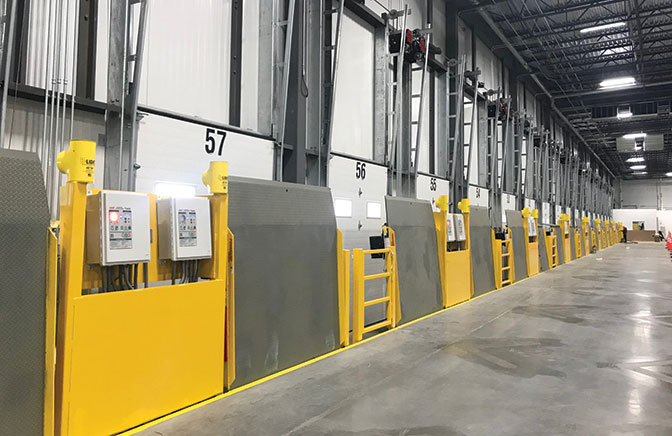
Connected docks
Dock equipment such as doors, vehicle restraints and dock levelers are another area where IoT is getting applied, because visibility into when and how this gear gets used provides a window into dock activity, says Brett Lindstrom, director of marketing and connected experience with Systems LLC, whose Poweramp, DLM and McGuire brands offer dock equipment. The company also offers MyQ, an IoT-enabled dock analytics solution.
Dock equipment products have used sensors for years to support safety-related “interconnect” functions so that loading can’t begin until vehicles are secured, but only in recent years have vendors connected these sensors to the Cloud to provide analytics and alerts that zero in on inefficient dock processes.
For example, says Lindstrom, a connected dock solution will detect when a truck pulls into position for unloading, when the dock door opens, and when unloading or loading begins. If a door remains closed for too long with no unloading underway, management can be notified so someone can expedite the situation.
Similarly, an IoT-enabled dock solution can also detect if a door is being left open too long after loading is complete in a refrigerated warehouse, a situation that if left unchecked leads to rapid energy waste. Or, by simply monitoring dock door cycles, the analytics can show which docks are being over-used, and which are under-used.
“This [Cloud dock management] is really taking that sensor functionality within dock equipment and feeding it up to the Cloud to convert it into analytical reports that somebody can use to improve their operation,” says Lindstrom. “You can use the analytics to evaluate whether your truck turn times and load times are staying on track, and you can use it to generate alerts if a truck is sitting there too long, untouched.”
Lindstrom says one operation using MyQ has just more than 100 dock doors, while others have a handful. The smaller sites, he adds, often are drawn to the alerting, while the larger operations tend to use the analytics to monitor cycle times closely, or to help with scheduling of maintenance by knowing when docks are least busy.
The time stamping on the coming and goings of trucks can help an operation avoid detention fees by being able to prove dwell times to carriers.
Dynamic adjustments
Gaining better control over the movement of material, people or assets like pallets is another area for applying IoT. After all, warehouses are dynamic places in which IoT-enabled monitoring can help the operation make the right adjustments.
Amin Sikander, president of Synkrato, says sensor feeds, including location-providing beacons and other types of sensors, can benefit a warehouse by providing insight into the real-time movement of goods and people. But IoT data should feed into a software platform that can make sense of the trends and recommend changes to the operation’s material flow or storage, such as changing the slotting of certain items, or more crossdocking in certain situations.
Synkrato’s slotting engine and digital twin software make use of IoT data feeds, he adds, in determining how to adjust to change. “You’re slotting on the fly as product comes in and goes out, and you do that based on the information you get from the digital twin and these IoT systems,” Sikander says. “It’s an adaptive slotting algorithm that looks at your changing demand, and at your real-time warehouse activity, and constantly optimizes storage.”
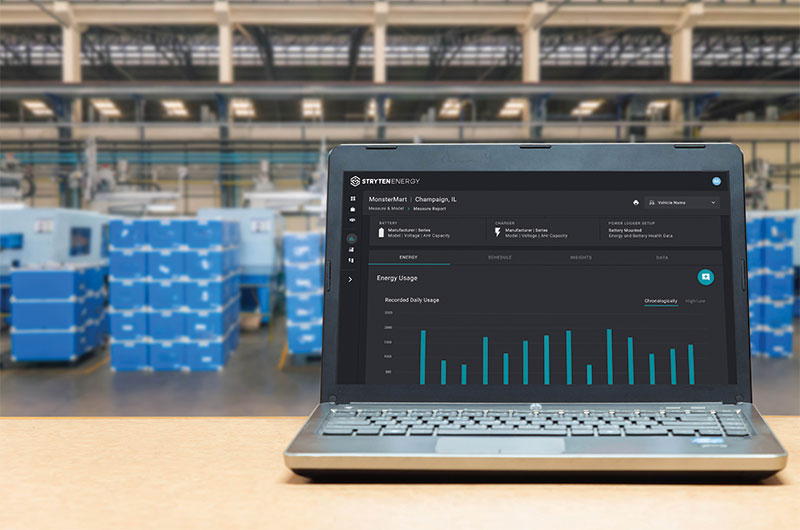
Pallets have also been IoT enabled. The reasons include reducing loss in pallet pools, as well as cold-chain monitoring.
Mike Jones, a principal with the Pallet Alliance, a pallet program management provider, says Pallet Alliance offers a couple of IoT-enabled pallet solutions. One of them, IntelliPallet, embeds tracking sensors within a wooden pallet, invisibly within its structure, so a company with a closed loop or partially closed-loop pallet pool knows location and can gain insights on where pallets are getting lost.
“The biggest use case for the tracking of wood pallets has been figuring out where they are going and when they are being lost—to improve the retention of these pallets assets within the pool, and understand more about the recycling operations for them,” he says. “I consider that to be a basic use case, but it can be an impactful one, because when you’re talking about larger recycling operations, even a small adjustment to practices within the pool can have a big impact in terms of savings.”
Pallet Alliance has also partnered with CargoSense, which offers visibility and analytics software, and a plastic pallet manufacturer, to come up with an IoT-enabled plastic pallet solution for cold chain monitoring of food or other temperature-controlled cargo. Known as ONVITA, a key part of the solution is how the analytics software can be used to monitor thresholds and drive alerts.
“You’re getting advanced notifications and visibility, to make more informed decisions about cargo condition and location,” says Jones.
Kenco Logistics has used or tested various solutions that involve IoT, according to Trever Ehrlich, creative solutions manager, at Kenco Logistics’ Innovation Labs. A short list of these that have at least been tested by the third-party logistics provider’s lab include IoT monitoring of pack stations, IoT-enabled pick-to-light systems, and data generated by flying, inventory-counting drones, says Ehrlich.
Additionally, the company makes broader use of solutions such as lift truck telematics and assistive picking mobile robots, which can be seen as being IoT, since they wirelessly feed sensor data up to Cloud analytics.
The difference with IoT in warehousing versus consumer-oriented IoT, says Ehrlich, is that IoT in a warehouse tends to be more about improving key operational process like packing, inventory counts or picking, as opposed to doing something like automatically ordering more detergent for a smart washing machine.
And, Ehrlich agrees, it’s not so much the sensor connectivity piece that matters, but how the data gets analyzed within Cloud software that operations managers, maintenance managers, and other interested parties like service partners can take timely, correct actions.
“IoT gives great visibility whereas in the past, you didn’t have that visibility, or had to really dig around to find the information,” Ehrlich says. “Now with these IoT-enabled solutions, different parties and different levels of the organization can tap into the visibility they need to improve a process.”

Article Topics
Internet of Things News & Resources
MODEX C-Suite Interview with Norm Kukuk: The Circular Economy Becomes a Core Priority Transformation and resilience at the new J&J Powerfleet and MiX Telematics announce business combination The Association for Supply Chain Management launches new technology certificate Survey: Attracting and retaining the right people ranks as top concern for warehouse productivity Unpacking the Internet of Things (IoT)-enabled warehouse IoT automation company KINEXON raises $130 million in funding led by Thomas H. Lee Partners More Internet of ThingsLatest in Materials Handling
Registration open for Pack Expo International 2024 Walmart chooses Swisslog AS/RS and software for third milk processing facility NetLogistik partners with Vuzix subsidiary Moviynt to offer mobility solutions for warehouses Materials Handling Robotics: The new world of heterogeneous robotic integration BSLBATT is looking for new distributors and resellers worldwide Lucas Watson appointed CSO for Körber’s Parcel Logistics business in North America Hyster recognizes Dealers of Distinction for 2023 More Materials HandlingAbout the Author
Subscribe to Materials Handling Magazine

Find out what the world's most innovative companies are doing to improve productivity in their plants and distribution centers.
Start your FREE subscription today.
April 2024 Modern Materials Handling

Latest Resources


